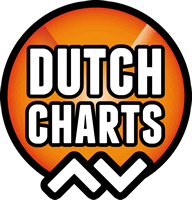|
De Niña A Mujer
''De Niña a Mujer'' (English: ''From a Child to a Woman'') is a 1981 album by Julio Iglesias. The album was his first Spanish-language album to be released in the United States by Columbia Records to capitalize on the singer's rising popularity. The American version was retitled "From a Child to a Woman" and released simultaneously with the original Discos CBS version. The album, as its title implies, was dedicated to his daughter Chabeli, who is featured on the album's cover alongside her dad. Track listing All tracks produced by Ramón Arcusa. Charts Weekly charts Year-end charts Certifications and sales See also * List of best-selling albums in Brazil The following is an independently list of best-selling albums in Brazil. This list can contain any types of album, including studio albums, extended plays, greatest hits, compilations, various artists, soundtracks and remixes. The list is divid ... References {{DEFAULTSORT:De nina a ... [...More Info...] [...Related Items...] OR: [Wikipedia] [Google] [Baidu] |
Studio Album
An album is a collection of audio recordings issued on compact disc (CD), Phonograph record, vinyl, audio tape, or another medium such as Digital distribution#Music, digital distribution. Albums of recorded sound were developed in the early 20th century as individual Phonograph record#78 rpm disc developments, 78 rpm records collected in a bound book resembling a photograph album; this format evolved after 1948 into single vinyl LP record, long-playing (LP) records played at revolutions per minute, rpm. The album was the dominant form of recorded music expression and consumption from the mid-1960s to the early 21st century, a period known as the album era. Vinyl LPs are still issued, though album sales in the 21st-century have mostly focused on CD and MP3 formats. The 8-track tape was the first tape format widely used alongside vinyl from 1965 until being phased out by 1983 and was gradually supplanted by the cassette tape during the 1970s and early 1980s; the populari ... [...More Info...] [...Related Items...] OR: [Wikipedia] [Google] [Baidu] |
Manuel Alejandro
Manuel Álvarez-Beigbeder Pérez (born 21 February 1932), better known as Manuel Alejandro, is a Spanish composer of Latin love songs, which are better known as ''ballads''. He has written, composed, and arranged songs for the likes of Luis Miguel, Plácido Domingo, Nino Bravo, Julio Iglesias, Raphael, Hernaldo Zúñiga, José José, José Luis Rodríguez, Emmanuel, Enrique Guzmán, Isabel Pantoja, Rocío Jurado, Rudy Marquez, and Jeanette, among many others. Biography Manuel Alejandro was born in 1932 in Jerez de la Frontera–Cádiz. He is the son of one of Spain's most renowned contemporary symphonists, Germán Álvarez Beigbeder. It was his father, an accomplished musician, professor, and composer, who inspired Manuel Alejandro to pursue music and become a composer. Musical career Hits of the 60s He started writing songs for Spanish singer Raphael during the 1960s. Many of those songs are now considered classics. The list includes such hits as: * " Yo Soy Aqu ... [...More Info...] [...Related Items...] OR: [Wikipedia] [Google] [Baidu] |
Dutch Charts
Dutch Charts, GfK Dutch Charts, MegaCharts is a chart company responsible for producing a number of official charts in the Netherlands, of which the Single Top 100 and the Album Top 100 are the most known ones. Dutch Charts are also part of GfK Benelux Marketing Services. The Mega Charts ;Singles and Tracks *Single Top 100 *Single Tip ;Albums * Album Top 100 *Compilation Top 30 *Combi Album Top 100 *Backcatalogue Top 50 ;DVDs and others *Dance Top 30 *Midprice Top 50 *Music DVD Top 30 *Film DVD Top 30 *Game Top 10 References External links * Music organisations based in the Netherlands {{music-company-stub ... [...More Info...] [...Related Items...] OR: [Wikipedia] [Google] [Baidu] |
Sociedad General De Autores Y Editores
The Spanish Society of Authors and Publishers (''Sociedad General de Autores y Editores, SGAE'') is the main collecting society for songwriters, composers and music publishers in Spain. It is similar to AGADU, ASCAP The American Society of Composers, Authors, and Publishers (ASCAP) () is an American not-for-profit performance-rights organization (PRO) that collectively licenses the public performance rights of its members' musical works to venues, broadca ..., GEMA, SADAIC, Société des auteurs, compositeurs et éditeurs de musique, SACEM and SAYCO. The philologist, poet, composer, scriptwriter, movie and television director and producer Antón Reixa (1957) is the Chairman of the Board of Directors since May 2012. SGAE was founded in 1889 as Society of Authors of Spain. In 1995, its name changed to Society of Authors and Publishers, seeking to accommodate cultural editors. SGAE comprises more than 100,000 music, audiovisual and dramatic creators. Created in 1899, its main m ... [...More Info...] [...Related Items...] OR: [Wikipedia] [Google] [Baidu] |
Productores De Música De España
Productores de Música de España (English: Spanish Music Producers, shortened as Promusicae) is the national organisation responsible for the music charts of Spain. It is a trade association that represents more than 90% of the Spanish recorded music industry. It is the International Federation of the Phonographic Industry (IFPI) group for Spain. Promusicae is based in Madrid, Spain at Calle María de Molina, 39. History Promusicae began in 1958 as a representative of the IFPI in Spain under the name of the Spanish Group of the International Federation of the Phonographic Industry (), although not officially an association, since Spanish law during the Franco regime did not recognize the right of association until 1977. In 1978, it was registered as an association under the name Spanish Phonographic Association () (AFE). In 1982, with the emergence and popularization of the music video, the AFE changed its name to Phonographic and Videographic Association of Spain () (AFYVE). F ... [...More Info...] [...Related Items...] OR: [Wikipedia] [Google] [Baidu] |
Tokyo
Tokyo (; ja, 東京, , ), officially the Tokyo Metropolis ( ja, 東京都, label=none, ), is the capital and largest city of Japan. Formerly known as Edo, its metropolitan area () is the most populous in the world, with an estimated 37.468 million residents ; the city proper has a population of 13.99 million people. Located at the head of Tokyo Bay, the prefecture forms part of the Kantō region on the central coast of Honshu, Japan's largest island. Tokyo serves as Japan's economic center and is the seat of both the Japanese government and the Emperor of Japan. Originally a fishing village named Edo, the city became politically prominent in 1603, when it became the seat of the Tokugawa shogunate. By the mid-18th century, Edo was one of the most populous cities in the world with a population of over one million people. Following the Meiji Restoration of 1868, the imperial capital in Kyoto was moved to Edo, which was renamed "Tokyo" (). Tokyo was devastate ... [...More Info...] [...Related Items...] OR: [Wikipedia] [Google] [Baidu] |
Roppongi
is a district of Minato, Tokyo, Japan, famous for the affluent Roppongi Hills development area and popular night club scene. A few foreign embassies are located near Roppongi, and the night life is popular with locals and foreigners alike. It is in the central part of Tokyo, south of Akasaka and north of Azabu. History The name ''Roppongi'', which appears to have been coined around 1660, literally means "six trees". Six very old and large zelkova trees used to mark the area; the first three were cleared, and the last were destroyed during World War II. Another legend has it that the name comes from the fact that six ''daimyōs'' lived nearby during the Edo period, each with the kanji character for "tree" or a kind of tree in their names. Roppongi was not extensively populated until after the Meiji Restoration, although the area was trafficked for centuries and served as the site of the cremation of Shōgun Tokugawa Hidetada's wife in 1626.Gary CooperGood ol' six trees—the way ... [...More Info...] [...Related Items...] OR: [Wikipedia] [Google] [Baidu] |
Oricon
, established in 1999, is the holding company at the head of a Japanese corporate group that supplies statistics and information on music and the music industry in Japan and Western music. It started as, which was founded by Sōkō Koike in November 1967 and became known for its music charts. Oricon Inc. was originally set up as a subsidiary of Original Confidence and took over the latter's Oricon record charts in April 2002. The charts are compiled from data drawn from some 39,700 retail outlets (as of April 2011) and provide sales rankings of music CDs, DVDs, electronic games, and other entertainment products based on weekly tabulations. Results are announced every Tuesday and published in ''Oricon Style'' by subsidiary Oricon Entertainment Inc. The group also lists panel survey-based popularity ratings for television commercials on its official website. Oricon started publishing Combined Chart, which includes CD sales, digital sales, and streaming together, on December 19, 2 ... [...More Info...] [...Related Items...] OR: [Wikipedia] [Google] [Baidu] |
Billboard (magazine)
''Billboard'' (stylized as ''billboard'') is an American music and entertainment magazine published weekly by Penske Media Corporation. The magazine provides music charts, news, video, opinion, reviews, events, and style related to the music industry. Its music charts include the Hot 100, the 200, and the Global 200, tracking the most popular albums and songs in different genres of music. It also hosts events, owns a publishing firm, and operates several TV shows. ''Billboard'' was founded in 1894 by William Donaldson and James Hennegan as a trade publication for bill posters. Donaldson later acquired Hennegan's interest in 1900 for $500. In the early years of the 20th century, it covered the entertainment industry, such as circuses, fairs, and burlesque shows, and also created a mail service for travelling entertainers. ''Billboard'' began focusing more on the music industry as the jukebox, phonograph, and radio became commonplace. Many topics it covered were spun-off ... [...More Info...] [...Related Items...] OR: [Wikipedia] [Google] [Baidu] |
HUMO
''HUMO'' is a popular Dutch-language Belgian weekly radio and television supermarket tabloid. History and profile ''Humoradio'' (meaning a portmanteau of 'humor' and 'radio' in English) was first published in 1936 as a Dutch-language counterpart to ''Le Moustique'', now '' Télémoustique''. During World War II between 1940 and 1944 ''Humoradio'' was not published. In 1958, when television started to reach a larger audience in the country, the magazine was renamed as ''Humo''. The magazine is published on a weekly basis. ''HUMO'' as it is recognized today started emerging from 1969 on, when Guy Mortier became its chief editor. He gave the magazine its playful comedic tone, put more emphasis on articles about rock music and shaped it into a magazine that appealed to a left-wing, progressive audience. During Mortier's term many classic columns, interview series, annual cultural events and comic strips that are still considered to be part of "Humo" today saw the day of light. Among ... [...More Info...] [...Related Items...] OR: [Wikipedia] [Google] [Baidu] |
Cash Box Magazine
''Cashbox'', also known as ''Cash Box'', was an American music industry trade magazine, originally published weekly from July 1942 to November 1996. Ten years after its dissolution, it was revived and continues as ''Cashbox Magazine'', an online magazine with weekly charts and occasional special print issues. In addition to the music industry, the magazine covered the amusement arcade industry, including jukebox machines and arcade games. History Print edition charts (1952–1996) ''Cashbox'' was one of several magazines that published record charts in the United States. Its most prominent competitors were ''Billboard'' and ''Record World'' (known as ''Music Vendor'' prior to April 1964). Unlike ''Billboard'', ''Cashbox'' combined all currently available recordings of a song into one chart position with artist and label information shown for each version, alphabetized by label. Originally, no indication of which version was the biggest seller was given, but from October 25, 1952, ... [...More Info...] [...Related Items...] OR: [Wikipedia] [Google] [Baidu] |


_07.jpg)



